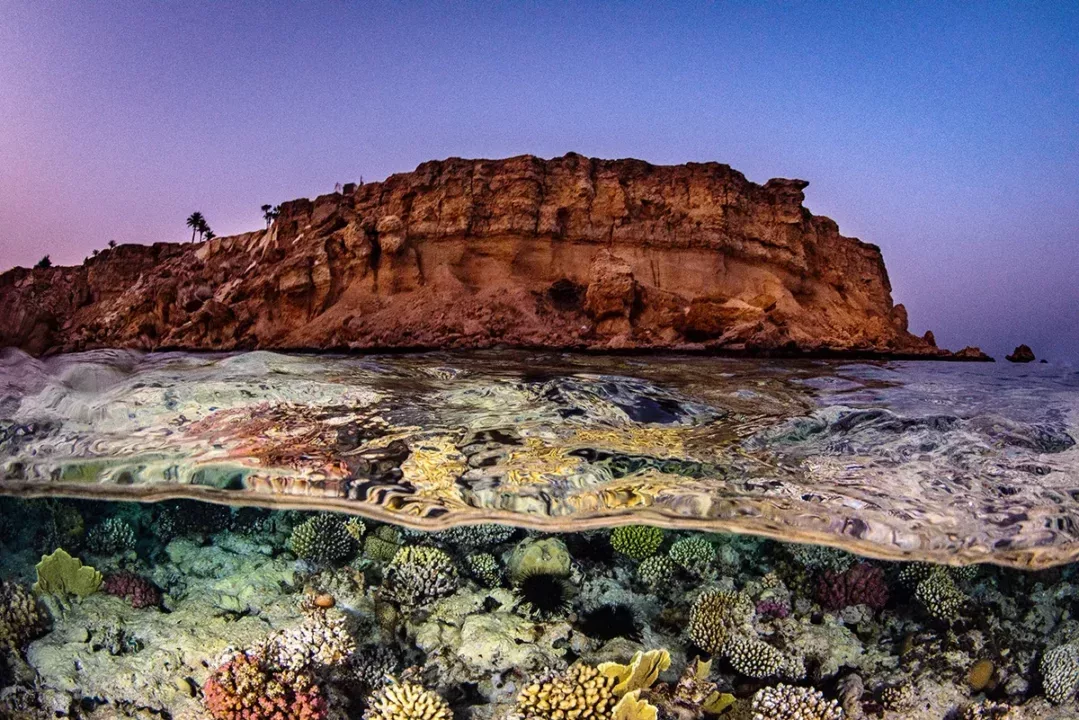A new global study has found that only 2.5 percent of tropical reefs are formally protected and conserved through laws and regulations. These numbers are significantly lower than previous estimates, and highlight an urgent need for governments, communities, and partnering organizations to create and expand marine reserves to protect these ecosystems which support more than 500 million people worldwide.
The study, authored by Tim McClanahan of WCS (Wildlife Conservation Society), is titled “Wilderness and conservation policies needed to avoid a coral reef fisheries crisis” and appears in the latest edition of the journal Marine Policy.
“A brewing crisis for tropical fisheries is emerging due to the lack of protection for reef ecosystems, and the increasing impacts of climate change,” said Dr Tim McClanahan, lead author of the study and senior WCS coral reef scientist. “For fisheries to be sustainable, there must be refuge zones where vulnerable fish populations can rebound. We need to take action now to formally, legally protect and conserve coral reef ecosystems for the benefit of the fish, and people, that rely on them.”
A central crux of this global coral reef analysis focuses on the two types of protection for reef ecosystems: passive and active.
Passive protection occurs when a reef is simply located so far from humans that the ecosystem is left mostly alone thanks to its remoteness. The study found that between 12 and 48 percent of coral reefs are passively protected, located far afield from people and cities in ocean wilderness zones. 12 percent of reefs are more than four hours travel time from the nearest human populations, essentially limiting access for most fishing operations and therefore “passively” protecting them from destructive human activities. 48 percent are more than nine hours from major cities. Scientists know from monitoring reef ecosystems that reefs four to nine hours away from markets and human settlements tend to have significantly higher numbers of fish living on them, making these reefs a crucial refuge for vulnerable fish populations that help sustain the world’s fishing stocks.
Active protection occurs when a reef is part of a formal marine reserve, similar to a national park, protected by laws and regulations enforced by governments. Only 2.5 percent of reefs were found to be “actively” conserved, a figure much lower than previous, more-optimistic estimates. A further cause for concern was that most of those formally protected coral reefs were located four or more hours from the nearest human settlements, which means they qualify as reefs that would have been “passively” protected by virtue of their remoteness. This indicates that marine protected areas are often not being placed strategically to benefit the nearshore fish populations and human communities that need them most. Instead, they are being deployed in far afield ecosystems that are often relatively untouched. The author argues that this situation is a result of governments around the world trying to avoid conflicts with people involved in nearshore resource extraction activities.
“Global initiatives to increase marine ecosystem protection are on the rise,” said Dr. McClanahan. “We need to legally designate and actively protect remote wilderness areas with abundant fish populations, while also creating more nearshore marine reserves – most critically in regions where people are highly dependent on fish and communities are lacking local conservation laws. This will require planning on a region-by-region basis, and we need to act soon.”
Current scientific consensus suggests that 30 percent of all fisheries ecosystems need to be conserved to maintain global fish stocks and the full range of other benefits, both ecological and economical, that come from intact marine ecosystems. As the number of marine refuges decreases, the risk of biodiversity loss, lapses in fisheries production, and ecological degradation drastically increase. This new, more-accurate data outlining the true scope of coral reef refuges allows for more intelligent intervention to protect reefs now, giving governments and their partners the information they need to rapidly and rigorously expand active conservation measures to safeguard these crucial ecosystems.
This work was generously supported by the John D. and Catherine T. MacArthur Foundation, Bloomberg Philanthropies‘ Vibrant Oceans Initiative, and The Tiffany & Co. Foundation.
Source: WCS Newsroom website

